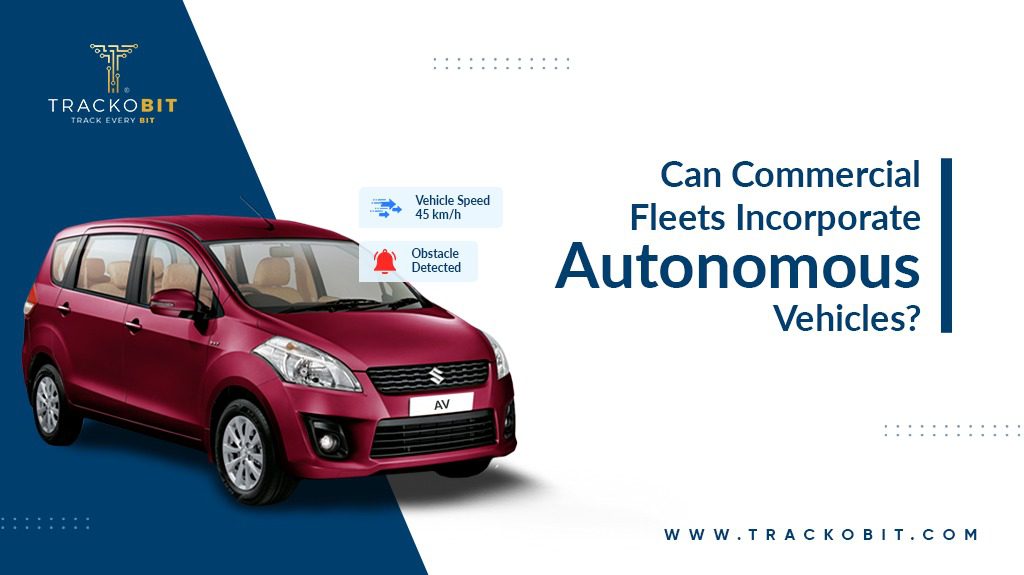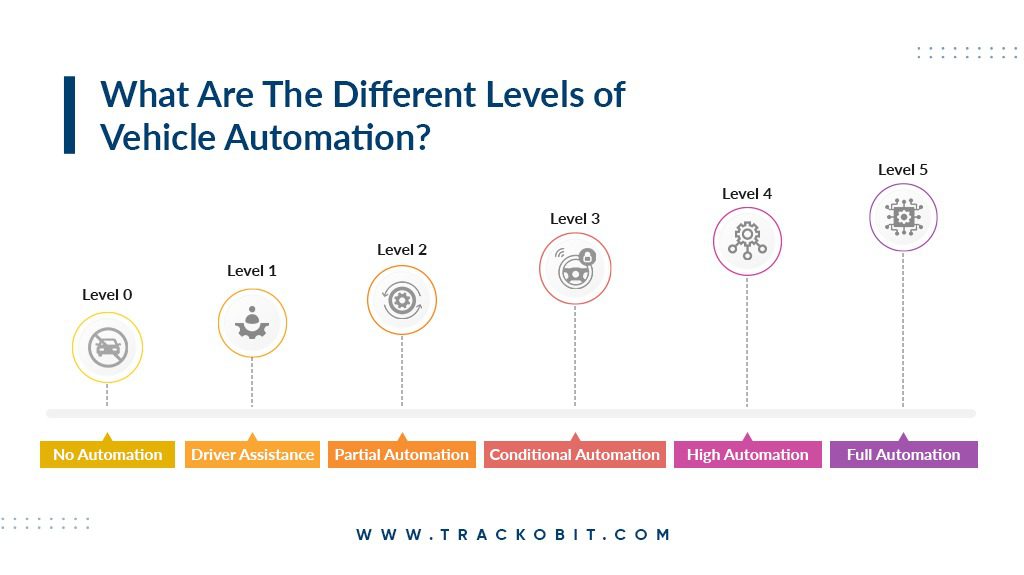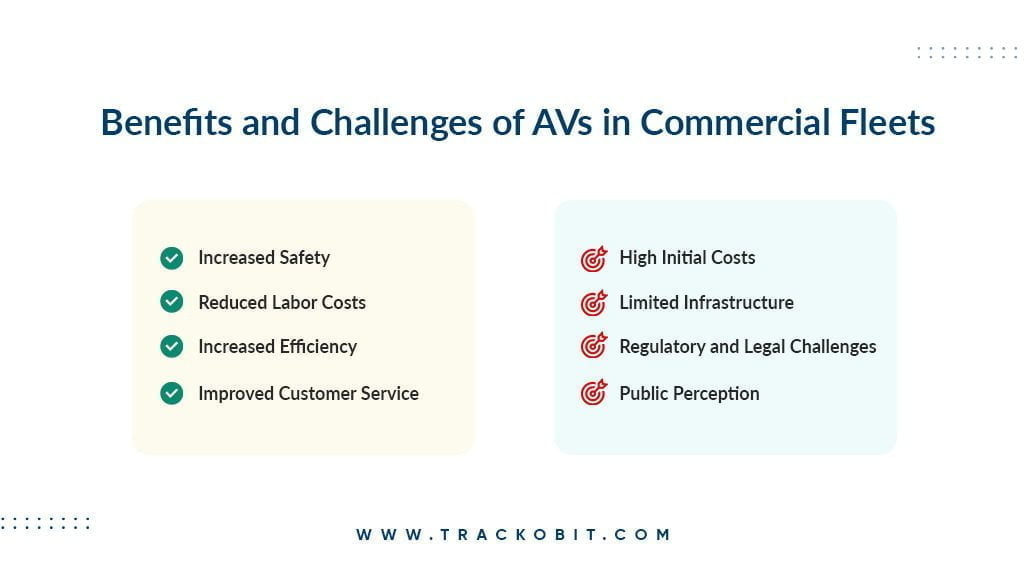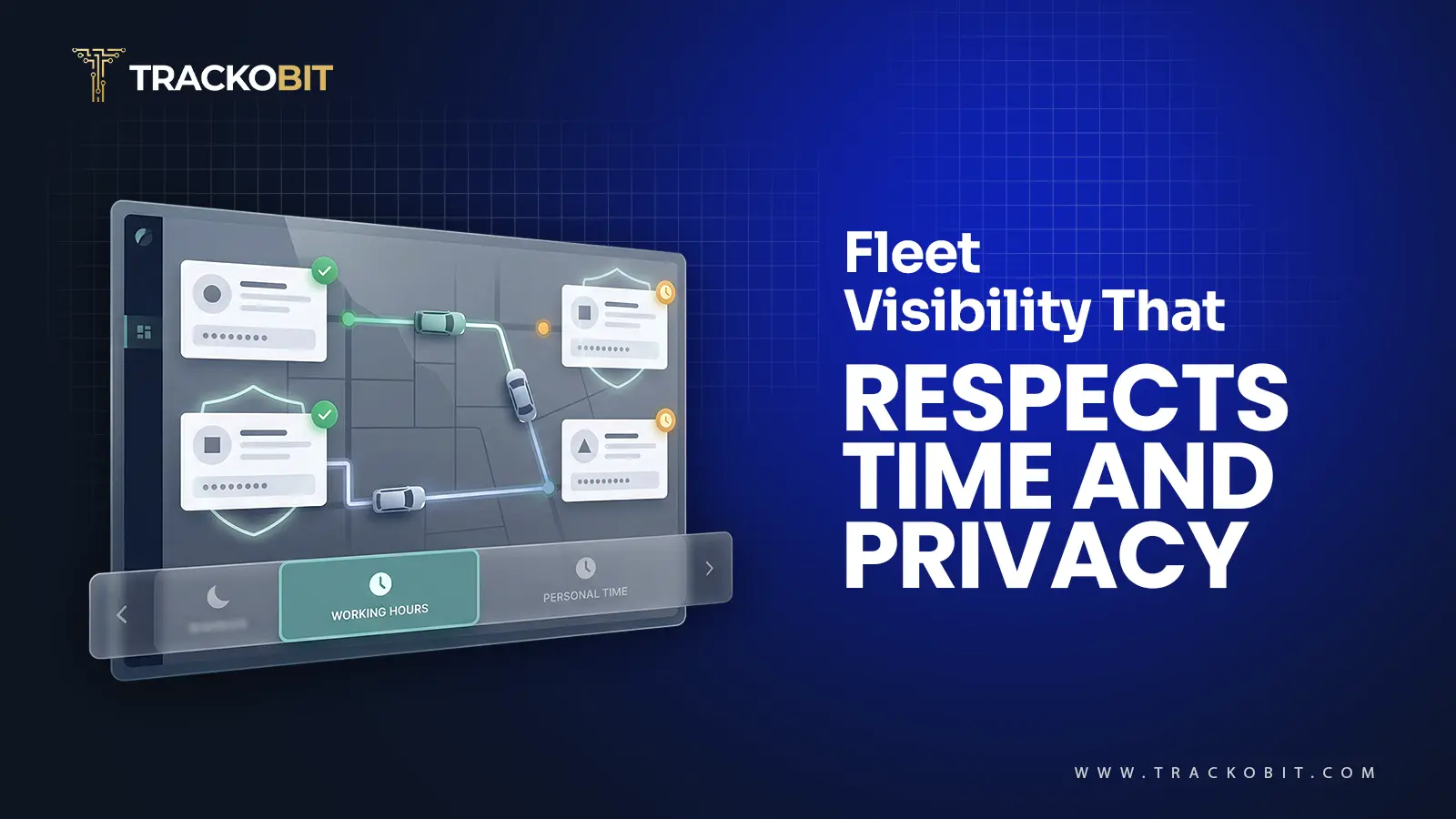-
TrackoBit
Manage commercial vehicles with the new-age Fleet Management Software
TrackoBit -
TrackoField
Streamline your scattered workforce with Field Force Management Software
TrackoField -
Features Resources
-
Blog
Carefully curated articles to update you on industrial trends. -
White Paper
Insightful papers and analysis on essential subject matters. -
Glossary
Explore an alphabetical list of relevant industry terms. -
What’s New
Get TrackoBit & TrackoField monthly updates here. -
Case Study
Explore the cases we solved with our diverse solutions. -
Comparisons
Compare platforms, features, and pricing to find your best fit.
-
About Us
Get to know TrackoBit: our team, ethos, values, and vision. -
Careers
Join the most dynamic cult of coders, creatives and changemakers. -
Tech Support
Learn about our technical support team and services in detail. -
Events
Check out the exhibitions where we left our marks and conquered. -
Contact Us
Connect with us and let us know how we can be of service.
Can Commercial Fleets Incorporate Autonomous Vehicles?
- Author:Ayushi Nagalia
- Read Time:9 min
- Published:
- Last Update: November 9, 2023
Table of Contents
Toggle
Automation is the truth of the future, and only with fleet management software can autonomous vehicles be truly incorporated into commercial fleets.
Table of Contents
Toggle
Imagine a world where transportation is safer, more efficient, and less expensive. This is the world that autonomous vehicles (AVs) promise to create! AVs are positioned to revolutionize the transportation industry and businesses that use them in the right way.
However, while there are many benefits to implementing AVs, there are also several challenges that need to be considered.
In this blog, we’ll explore the idea of implementing AVs in commercial fleets. We’ll also discuss how 5G connections can support AVs in commercial fleets for better future business operations.
Understanding Autonomous Vehicles
Before delving into our larger debate of whether or not autonomous vehicles should be a part of commercial fleets, we should understand
- What exactly do we mean by autonomous vehicles
- What are the different levels of automation in vehicles
To begin with, let us understand that by autonomous vehicles for commercial fleets, we do not mean vehicles that can also pick up and drop consignment. There will have to be human support to handle consignment. However, a completely autonomous vehicle will be able to drive in any road condition without any human support.
Simply put, autonomous vehicles are self-driving vehicles that use sensors, cameras, and other technologies to navigate roads and transport goods, or people. AVs operate without human intervention, which means they do not require a driver.
What Are The Different Levels of Vehicle Automation?
All vehicles with even an ounce of smartness to move with reduced or no human intervention come under the category of autonomous vehicles. However, not all of them are as smart as The Flying Ford from Harry Potter! There are levels of automation in every autonomous vehicle.
It’s important to understand the different levels when considering the implementation of AVs in fleet operations.
- Level 0 (No Automation): The driver is in complete control of the vehicle.
- Level 1 (Driver Assistance): The vehicle has some automated features, such as cruise control or lane departure warning. However, the driver is still responsible for most aspects of driving.
- Level 2 (Partial Automation): The vehicle can control acceleration, braking, and steering. However, the driver must remain alert and ready to take over at any time.
- Level 3 (Conditional Automation): The vehicle can control all aspects of driving in certain situations. The driver, however, must be ready to take over when the vehicle encounters situations of close proximity to the surroundings.
- Level 4 (High Automation): The vehicle can operate without human intervention in most situations. These vehicles operate in enclosed and designated areas though.
- Level 5 (Full Automation): The vehicle can operate without human intervention in all driving situations. It can operate autonomously in all situations and road conditions.
If you do want to incorporate AVs into your commercial fleet, you need to pick the right level according to your requirements.
For example, Level 5 automation may not be necessary for all fleet operations. In fact, even the infrastructure and regulatory landscape may not be equipped to support vehicles at this level of automation. However, Level 2 or 3 automation can make a significant impact in supercharging fleet operations with less human effort.

What Fleet Technologies Make AVs Possible?
There are three major technologies used by all commercial fleets that come together to make AVs a near possibility:
- Telematics: One of the key technologies that underpin AVs is telematics. (You can read this blog to learn everything about Telematics and smart vehicle systems.)
- 5G networks: 5G networks impact vehicle with faster and more reliable connectivity are critical to the development of AVs. Better connections ensure vehicle-to-vehicle (V2V), vehicle-to-infrastructure (V2I), and vehicle-to-everything (V2X) connectivity, establishing better telematics, including video telematics, which is the basis for autonomous vehicles.
- Video Telematics: Video telematics allows vehicles to “see” their surroundings and make decisions based on what they observe. Dashcams and sensors capture data about the vehicle’s environment, including other vehicles, pedestrians, and obstacles. The data is then analyzed through AI to navigate the road.
This is crucial information for fleet managers to understand because it allows them to see that they have the opportunity to incorporate AVs into their commercial fleet with the same technology as before. So, if you are enticed by AVs but are sceptical because of the additional tech required, know that it is still possible.
Benefits of Incorporating Autonomous Vehicles into Commercial Fleets
As the world is shifting towards autonomous vehicles, there are some obvious benefits of adopting the latest technology. These benefits are actually more potent when autonomous vehicles are adopted in commercial fleets because of the level of productivity they can bring to the segment. Let us look into some of those benefits here.
Increased Safety
Be it drowsy or distracted drivers, drivers driving under the influence, or loss of driver’s control – human errors seem to be the leading reasons for road accidents. And this is where AVs shine. They are designed to be safer than traditional vehicles because they eliminate human error.
AVs are equipped with sensors and cameras that can detect obstacles, pedestrians, and other vehicles on the road. Powered by faultless AI, this mechanism allows AVs to make split-second decisions and avoid accidents.
Reduced Labor Costs
Every vehicle needs a driver. Therefore, for every vehicle you add to your fleet, you need to incur additional expenses of hiring a driver.
One of the biggest expenses for fleet operators is labour costs. With AVs, fleet operators can reduce labour costs by eliminating the need for drivers. AVs can operate 24/7, which means they can transport goods more efficiently and at a lower cost.
Increased Efficiency
AVs are more efficient than traditional vehicles because they can communicate with each other and with traffic management systems. This allows AVs to optimize their routes, reduce congestion, and avoid traffic jams.
A great example of this functionality is while managing routes for say, a waste management business. It will get easier to stop vehicles from crossing paths when they themselves can sense intersections.
Improved Customer Service
AVs can provide better customer service by offering more reliable and predictable delivery times. AVs can operate 24/7, which means they can deliver goods faster and more efficiently than traditional vehicles. This can help fleet operators improve customer satisfaction and retain customers.

Challenges of Incorporating Autonomous Vehicles into Commercial Fleets
The benefits of adopting autonomous vehicles for commercial fleets might seem too high to ignore. However, before putting all your eggs in one basket, it is also important to note that AV adaptation is not the easiest thing around as it comes with its own set of challenges. Let us look into them here.
High Initial Costs
One of the biggest challenges associated with implementing AVs in fleet operations is the high initial costs. AVs are expensive to develop and produce, and fleet operators will need to invest significant amounts of money in order to acquire and operate these vehicles.
Limited Infrastructure
Another challenge associated with implementing AVs in fleet operations is the limited infrastructure to support these vehicles. AVs require specialized infrastructure, such as high-speed wireless networks and specialized charging and maintenance facilities.
While some cities and regions are investing in infrastructure to support AVs, many areas are not yet equipped to support these vehicles. Therefore, businesses that incorporate AVs into their fleets, they would either have to build this infrastructure themselves or wait for their network to advance accordingly.
Regulatory and Legal Challenges
There are currently no federal regulations in the US and most other countries specifically governing AVs. This can make it challenging for fleet operators to navigate the regulatory landscape.
There are also legal challenges related to liability in the event of an accident involving an AV. Therefore, just like issues with infrastructural development, fleet managers need to carefully tread on their path of using AVs for commercial fleets.
Public Perception
AVs are still a relatively new technology, and many people are wary of them. Some people may be hesitant to use AVs for fear of losing jobs or due to concerns about safety.
It will take time for public perception of AVs to shift and for people to become more comfortable with this technology. Until then, there might be some customers who will not be comfortable with their cargo being carried by autonomous vehicles.
How Can Fleet Management Software Support Autonomous Vehicles?
The importance of fleet management software for making autonomous vehicles possible is only second to, well, hardware. Without robust telematics solutions along with strong network connections, autonomous vehicles will not be able to communicate, rendering them useless.
Let us look at some ways fleet management software can support AVs for commercial fleets.
Advanced Driver Assistance System (ADAS)
ADAS is the biggest step towards driving the automotive industry towards autonomous vehicles. It is through video telematics and proximity sensors’ data that AVs can detect risks whenever they occur in transit.
With enough data stored in fleet management software, it can teach AVs to mimic exact human behaviour barring errors. It is through ADAS that AVs can truly learn how to react to reach conditions.
Data Collection and Analysis
Fleet management software can collect and analyze data from various sources, such as telematics devices, sensors, and cameras, to provide real-time insights into vehicle performance. This data can help fleet operators identify areas where AVs could be beneficial, such as high-traffic areas or long-haul routes.
Moreover, all this collected data about vehicles’ location, performance, and data allows fleet operators to manage their vehicles, drivers, and assets while also optimizing vehicle operations, reducing costs, and improving safety.
Route Optimization
Fleet management software can help optimize routes by taking into account factors such as traffic patterns, road conditions, battery recharge timings, and vehicle performance. This can help reduce fuel consumption, improve delivery times, and increase overall efficiency.
The best thing about this function with AVs is that, unlike human drivers, AVs are bound to follow the assigned routes. The only reason why they might stray from their route is if managers or the system suggest a better-optimised route on the way.
Driving Pattern Monitoring
Fleet management software can monitor AV driving patterns such as speeding or harsh braking. When so much continuous data is collected through the software, it can act as a functional basis to help AVs identify and correct incorrect patterns that might be inefficiency and accident-prone.
Another importnat point of monitoring here is point-by-point tracking which can help predict road conditions. For example, if most vehicles generally break down at specific points, the software can register it as a hazardous point on the route.
Maintenance Management
When there are no drivers to ‘feel’ that ‘something is off’ with the vehicle, several AVs could be running at their optimum state. Fleet management software can help operators manage vehicle maintenance by providing real-time data on vehicle performance and maintenance needs. This can help reduce downtime and increase vehicle lifespan.
Fleet management software can also offer alerts for kilometres remaining until the next scheduled service. Therefore, fleet managers can rest assured that everything is all with the vehicles.
Compliance Management
Fleet management software can help fleet operators ensure compliance with regulatory requirements, such as hours-of-service regulations or vehicle inspection requirements. This can help reduce the risk of fines and penalties.
Moreover, the software can also capture incidents of risk or compliance breaking to help improve the AV infrastructure.
Let’s Drive Towards the Future!
Autonomous vehicles offer several benefits for commercial fleets. Gains such as increased safety, reduced labour costs, increased efficiency, and improved customer service are irresistible. However, implementing AVs also poses several challenges too.
In this blog, we have made clear distinctions between the benefits and challenges of adopting AVs in commercial fleets. We have also talked about how the right fleet management software can help incorporate these vehicles of the future into your fleet seamlessly. Hope you can make a smart decision with the help of the right tools for your fleet!
Ayushi Nagalia is a Senior Content Specialist at TrackoBit. She is a marketing maverick with a lush background in literature. With years of experience crafting content for various niches, she speciali... Read More
Related Blogs
-

When Tracking Needs a Clock: Rethinking Fleet Visibility
Tithi Agarwal December 24, 2025Read on to understand why fleet tracking works better when it follows working hours. Because visibility should support operations, not…
-

What Makes TrackoBit’s Video Telematics Software Truly Next-Gen?
Shemanti Ghosh December 17, 2025TrackoBit’s video telematics software blends smart video intelligence with full server control. The result? Superior fleet reliability and safety.
-

Plug, Pair, Perform TrackoBit Introduces BLE Sensor Integration
Tithi Agarwal November 26, 2025TrackoBit’s BLE Sensor Integration enables wireless, real-time monitoring with faster installs and accurate insights. It improves fleet efficiency, visibility, and…
-

How to Use Driver Behavior Reports as a Sales Hook to Close Big Fleets
Tithi Agarwal October 16, 2025TrackoBit’s driver behavior reports empower fleet providers to win big contracts by showcasing safety, efficiency, and measurable ROI.

Subscribe for weekly tips to optimize your fleet’s potential!
Your inbox awaits a welcome email. Stay tuned for the latest blog updates & expert insights.
"While you're here, dive into some more reads or grab quick bites from our social platforms!"Stay Updated on tech, telematics and mobility. Don't miss out on the latest in the industry.
We use cookies to enhance and personalize your browsing experience. By continuing to use our website, you agree to our Privacy Policy.

































